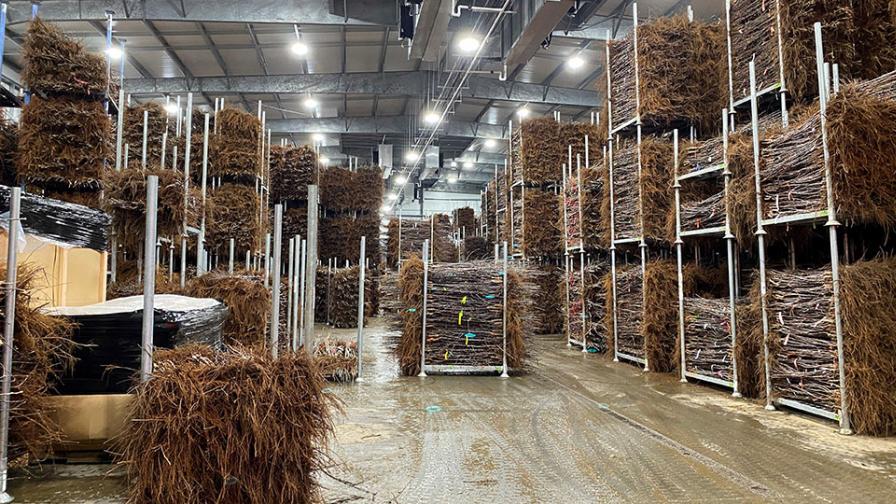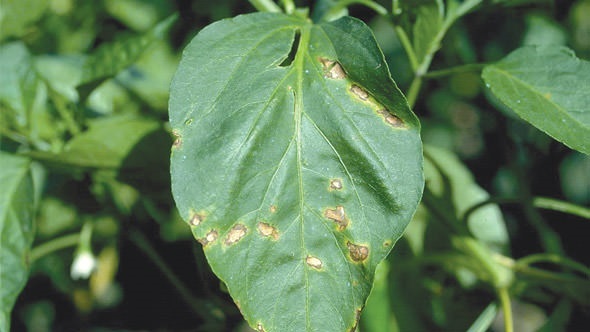Negotiating the Supply Chain To Find Solutions for Fruit Nurseries
All business have been in something of a whirlwind in recent times because of a whole host of issues, many related to the COVID pandemic, including worldwide supply chain disruptions. Our mid-year informal survey of nurseries shows they are a lot like the growers they serve these days, solving the almost-daily supply problems as they come.
“Our experience has probably been fairly similar to many of our customers,” says Reid Robinson, Executive Vice President of Sierra Gold Nursery in Yuba City, CA. “Standard materials that usually you can rely on to be ‘on demand,’ you have to be flexible, leverage supplier relationships, and wait longer and take more at once than you would normally be able to.”
They’ve encountered problems with sourcing all types of supplies, he says. “Steel for greenhouses, fertilizers, insecticides, herbicides, PVC pipe for irrigation, wooden stakes, peat moss, plastic trays, poly bags — you name it, we’ve had some sort of difficulty obtaining it or had to take and store more at once than we were planning. Of the specialized materials, two that come to mind, which were particularly problematic, were a specialized tape we use for budding trees and a specialized gelling agent used in tissue culture,” he says.
MANY DISRUPTIONS
Lance Keith, Inventory & Purchasing Manager at Fall Creek Nursery in Lowell, OR, says there have been a lot of disruptions, and his department did a lot of things differently. Many things just are not available at all, or they are delayed.
“It has forced us to be very flexible, plan far ahead, and order early. Our biggest challenge has been, and continues to be, long lead times, which forces us to order much earlier than usual,” he says. “For instance, we are placing orders in April in order to receive in December or January when we used to place these same orders in September or October.”
At Adams County Nursery in Aspers, PA, Jen Baugher says she has faced many of the same challenges, including posts and other orchard trellis supplies they provide as a service to their growers, but they’ve had issues sourcing these and several other items.
“Prices are skyrocketing on some of this stuff due to lack of supply, and we don’t know when we’ll see improvements there,” she says. “I’ve heard stories of growers canceling large tree orders late because they can’t get elements of their support system or irrigation parts — things they obviously need to successfully start a planting. And that’s certainly having an impact on nurseries as well.”
Up in Washington, Todd Snyder of C&O Nursery in Wenatchee, says they’ve been primarily affected in one main area, shipping boxes, and he advises growers to take note.
“We have enough for this season, but ‘just enough,’ and are shipping more orders in a disposable bin on larger orders where this makes sense,” he says. “We are cutting the amount of trees we have available for spring 2023 to offset supply chain scenarios and to help lower labor costs on the number of ‘spec’ trees we have to take care of.”

Cameron Nursery of Eltopia, WA, built this 20,000-square-foot facility two years ago. All the equipment is over the center aisle with the floor drain down the center of the room, so all equipment is serviceable even when the room is fully loaded. It features a double-redundant, super-efficient cooling system, a fogging/humidification system, 8 inches of hard insulation under the slab, and bright LED lighting.
Photo by Todd Cameron
SHIPPING COSTS SOAR
Shipping also has been a problem for Van Well Nursery of East Wenatchee, WA, says Pete Van Well. Though they naturally concentrate on the huge Washington fruit industry, they ship trees all over the country, and they’re not alone.
“I think all the main tree nurseries in Washington state depend not only on the people who are growing fruit in Washington state, the Pacific Northwest, and Northern California, but now we depend on the growers in Michigan, Pennsylvania, and New York,” he says. “And, boy, there are some big, big shipping fees. And that just makes the trees that much more expensive.”
It was just a short time ago that Van Well says he was complaining of paying an average of 50 to 60 cents per tree.
“It’s now $1.25 or higher,” he says, “it is just incredible.”
Another Washington nursery that ships to growers in the East and Midwest is Cameron Nursery in Eltopia. Shipping has indeed been a tough problem this year, Owner Todd Cameron says. In the early 2000s, a coast-to-coast tractor-trailer load cost about $3,500 to ship, about double that by a decade later. But since the beginning of the pandemic, the price has shot up.
“The ask is about $15,000 to 18,000 for one load, and we’re shopping the market as hard as we can, but we’ve been quoted as much as $30,000 for one load,” he says. “And not only is it expensive, it’s hard just to get a semi load. Right now it’s tough to get trucks, though I understand it’s very difficult just to get refrigerated containers to ship overseas.”
Many large Western fruit and nut growers would certainly agree with that sentiment. California nut growers were thought to be more insulated from overseas shipping problems because of nuts’ greater storage capability than fruit. But almond growers, in particular, are running out of storage. Jack Poukish, President of Sierra Gold Nursery, says a majority of Sierra Gold’s customers are California almond, walnut, and pistachio growers who export 60 to 70% of their crop.
“The lack of access to ports, containers, and ocean-bound freight has had huge impacts on the ability to meet the international demand for California-grown tree nuts,” he says. “The demand is there — the industry has just been challenged with its ability to ship, which has resulted in lost sales.”

Cameron Nursery employs mustard for soil preparation before replanting the layer bed. But sourcing inputs such as mustard seed can’t be taken for granted these days, so they’re planning far ahead.
Photo by Todd Cameron
ADVICE FOR GROWERS
Nursery operators say they are handling the challenges by being flexible and proactive. In uncertain times it can be difficult, but the last thing you want do is fail to act, says Adams County’s Baugher.
“The industry’s toughest challenge right now is so much feels unknown, and that can have an expansive ripple effect,” she says. “I just hope growers don’t stop planting. Stagnating in that way is never good for an operation. Diversify if that’s an option.”
One crop for California growers to consider in diversifying, says Tom Burchell, Burchell Nursery, Oakdale, CA, is olives. Prices are on the upswing as growers are going for the growing gourmet olive oil business. In addition, like nuts, they are mechanically harvested, saving on labor. “And the trees cost less because they’re not grafted; they’re a rooted cutting.”
In dealing with nurseries, Fall Creek’s Keith says it’s become more critical than ever to plan ahead and order early. Keeping in close contact with vendors is critical, as is verifying order times.
“I’m constantly reaffirming delivery dates,” he says. “I’ve increased frequency in reaching out to some vendors; some I talk to a couple of times a month to stay on their minds.”
Virtually everyone in the industry has suffered through shortages of shipping supplies, with Keith noting that sourcing cardboard has been particularly problematic.
“Remember who you can rely on,” he advises. “As we make decisions in the future on who we are going to order from, reliability may weigh more heavily than price in our decision-making.”









